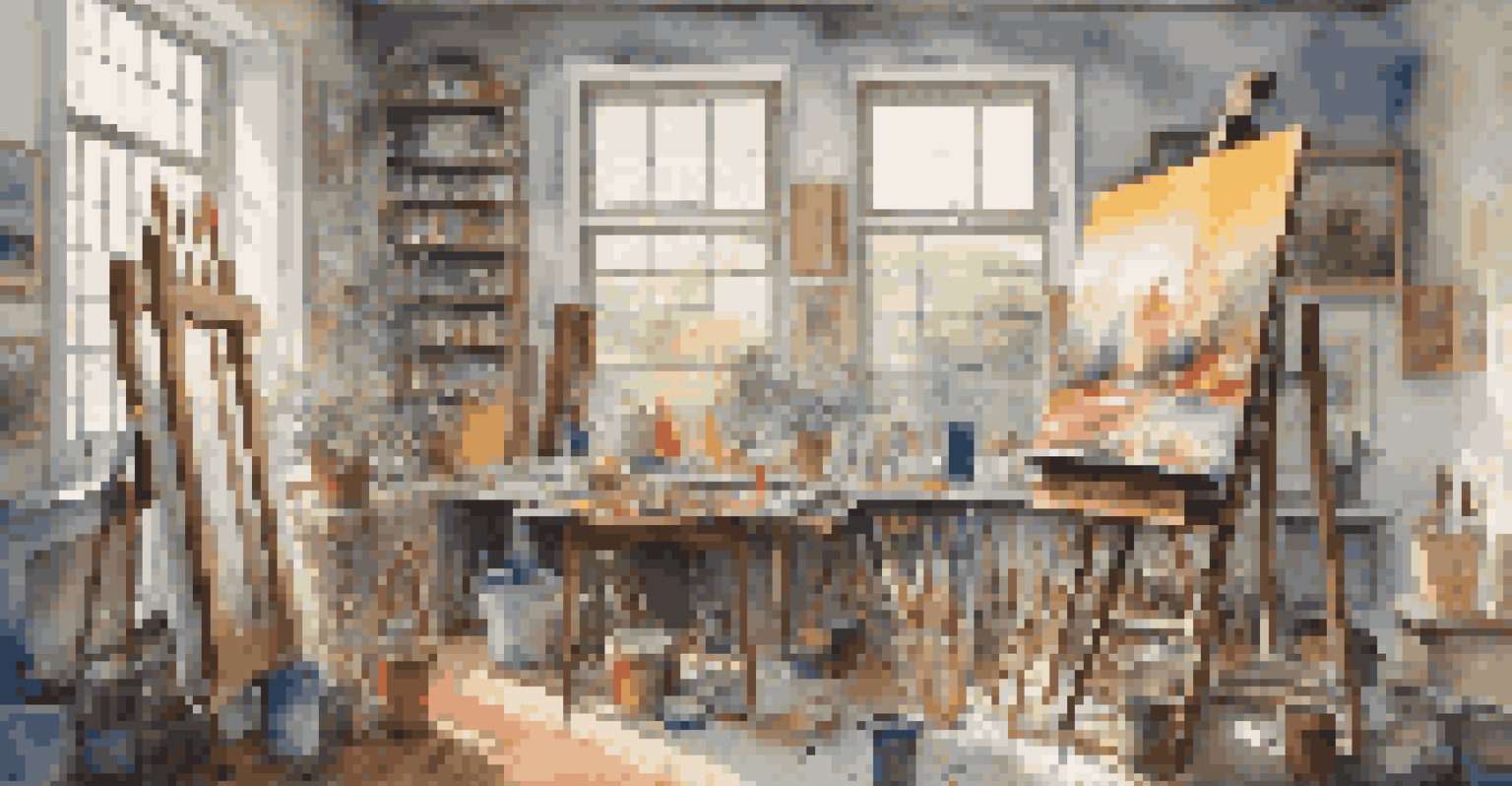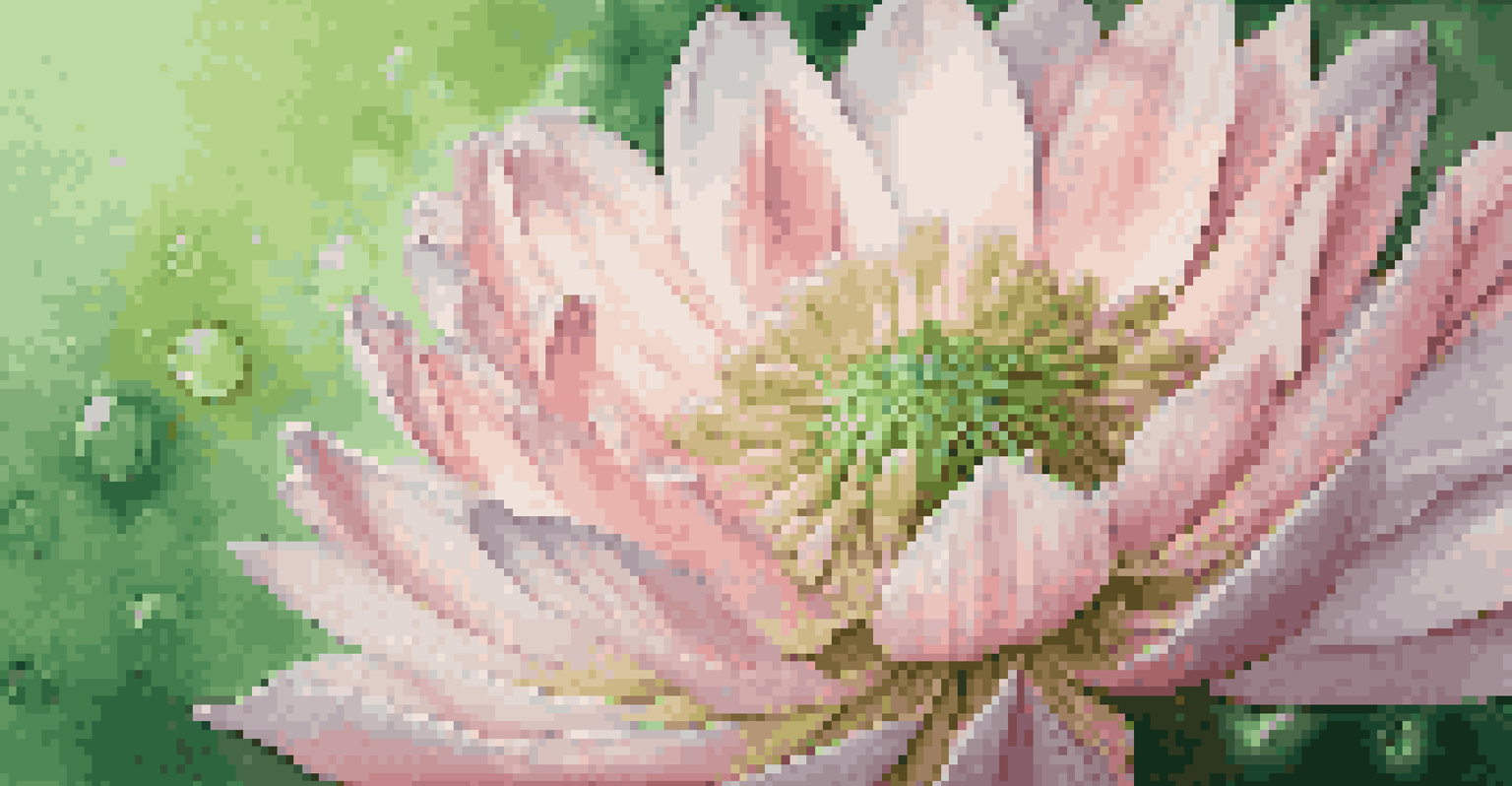The Role of Emotion in the Subconscious Artistic Experience

Understanding the Subconscious Mind in Art
The subconscious mind is like an iceberg, with most of its volume hidden beneath the surface. When it comes to art, this hidden layer holds our deepest emotions, memories, and instincts, influencing our creative expressions. Artists often tap into this subconscious reservoir, allowing their feelings and experiences to flow freely into their work, often without conscious control.
Art is the most beautiful of all lies; it is an illusion that we create to express our deepest emotions.
This connection between the subconscious and artistic expression can be seen in various art forms, from painting to music. For example, a painter might unexpectedly choose certain colors or shapes that reflect their inner emotional landscape, while a musician may improvise melodies that resonate with unexpressed feelings. The beauty of this process lies in its authenticity, as it often reveals truths that words cannot capture.
Ultimately, understanding the subconscious mind's role in art helps us appreciate the layers of meaning behind every piece. Whether it’s a haunting melody or a striking portrait, there’s often a deeper emotional narrative waiting to be uncovered, inviting viewers and listeners to connect on a profound level.
The Power of Emotion in Artistic Creation
Emotion serves as the driving force behind many artistic endeavors. Artists, whether they are aware of it or not, often channel their feelings into their work, creating pieces that resonate with others on a visceral level. This emotional infusion not only enriches the artwork but also enhances the viewer's experience, making it more relatable and impactful.

Take, for instance, the works of Vincent van Gogh, whose paintings reflect his tumultuous emotional state. His use of bold colors and dynamic brushstrokes conveys feelings of joy, despair, and everything in between. When we view his art, we don't just see colors on a canvas; we feel the intensity of his emotions, which can evoke our own personal responses.
This emotional connection can lead to catharsis for both the creator and the audience, transforming raw feelings into a shared experience. Therefore, the power of emotion in artistic creation is not just about expressing oneself; it’s about forging connections and fostering understanding among people.
Symbolism: The Language of Emotion in Art
Symbolism plays a crucial role in how emotions are conveyed in art. Artists often use symbols to represent complex feelings that may be difficult to express directly. For instance, a stormy sky in a painting might symbolize inner turmoil, while a blooming flower could represent hope and renewal.
The more I paint, the more I realize that the process of creating art is more important than the finished product.
These symbols act as a bridge between the subconscious and the conscious mind, allowing both the artist and the viewer to explore deeper meanings. When we recognize and interpret these symbols, we unlock layers of emotional significance that enrich our understanding of the artwork.
Thus, symbolism not only enhances the emotional depth of artistic creations but also engages viewers in a dialogue about their own feelings. This exchange fosters a richer appreciation of the art, as we relate our personal experiences to the symbols presented.
The Impact of Personal Experiences on Artistic Expression
Personal experiences shape our emotions, and in turn, these emotions influence our artistic expressions. Artists draw from their life stories, using their art as a medium to process feelings and reflect on their journeys. This personal touch often results in work that feels genuine and relatable, resonating with audiences who may have faced similar experiences.
For example, Frida Kahlo’s self-portraits vividly depict her struggles with identity and pain, allowing viewers to witness her emotional landscape. Her art offers an intimate glimpse into her life, allowing others to empathize and connect with her story. Such personal narratives in art invite viewers to explore their own feelings and experiences.
Ultimately, the impact of personal experiences on artistic expression highlights the universal nature of emotions. By sharing their stories through art, creators invite others to find solace and shared understanding in their work.
The Role of Memory in Shaping Artistic Emotion
Memory serves as a powerful catalyst for emotional expression in art, often acting as a repository of feelings and experiences. Artists frequently reflect on past events, using these memories to evoke emotions within their work. This process can create a sense of nostalgia, allowing both the artist and the audience to connect with shared human experiences.
For instance, a photographer might capture a moment that evokes childhood memories, infusing their work with a sense of longing or joy. Similarly, a writer may draw on personal recollections to craft poignant narratives that resonate with readers. These memories not only enrich the artwork but also invite viewers to explore their own pasts.
Thus, memory plays a crucial role in shaping the emotional landscape of artistic expression, creating a bridge between the past and the present. By engaging with these memories, artists can create works that inspire reflection and emotional resonance in their audience.
Art as a Reflection of Collective Emotion
Art often serves as a mirror reflecting the emotions of society at large. During times of social upheaval or change, artists respond to the collective feelings of their communities, using their craft to comment on or critique prevailing issues. This communal emotional response can lead to powerful artistic movements that resonate with many.
For example, the art produced during the Harlem Renaissance celebrated Black culture while addressing the struggles faced by the African American community. Artists like Langston Hughes and Jacob Lawrence captured the collective emotions of pride, resilience, and pain, creating works that spoke to the heart of the community’s experience.
By tapping into collective emotions, artists can create works that not only express their own feelings but also amplify the voices of those around them. This connection fosters a sense of unity and shared understanding, demonstrating the profound impact art can have on society.
The Therapeutic Aspects of Art and Emotion
Art has long been recognized for its therapeutic benefits, providing a safe outlet for emotional expression. Engaging in creative activities allows individuals to explore their feelings, process trauma, and find healing through their art. Whether it's painting, writing, or playing music, the act of creation can be a form of emotional release.
Therapeutic art often encourages individuals to delve into their subconscious, uncovering emotions that may have been buried. This process not only promotes self-discovery but can also lead to profound healing experiences. Art therapists frequently use creative expression as a tool to help clients articulate feelings that are difficult to express verbally.

Ultimately, the therapeutic aspects of art highlight the important role emotion plays in our lives. By embracing creativity as a means of emotional exploration, we can foster personal growth and well-being, illustrating the profound connection between art and the human experience.